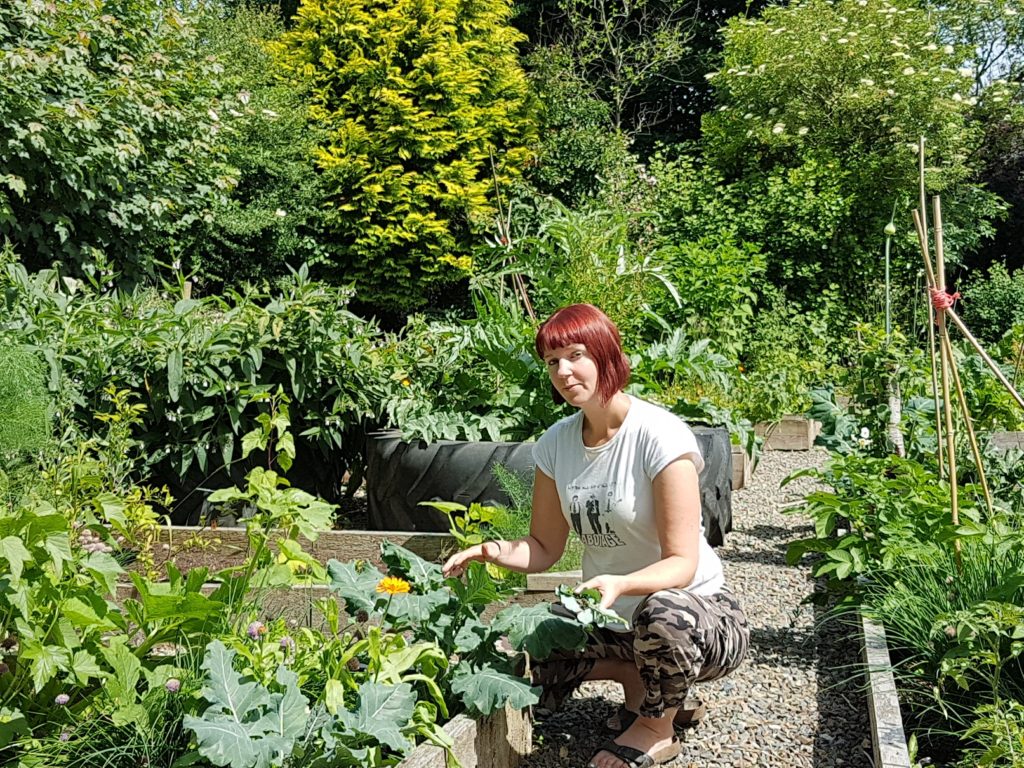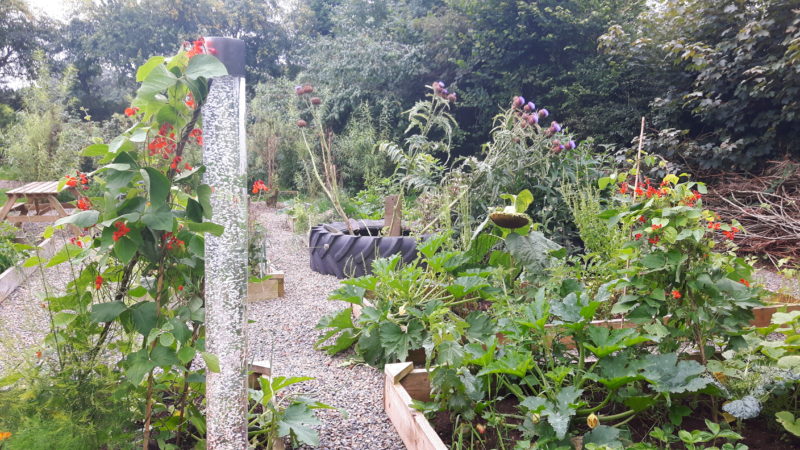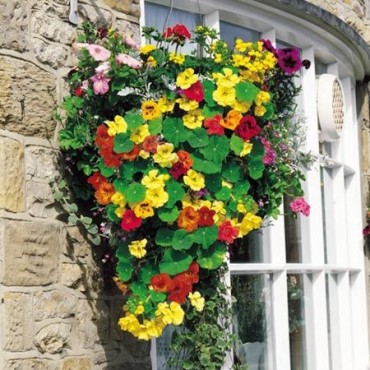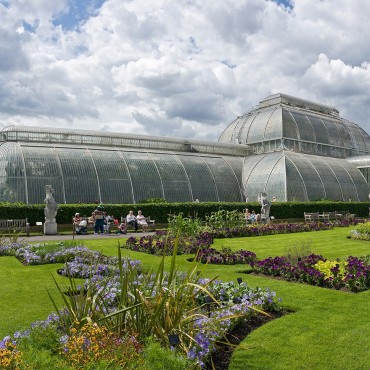In the second of a new series of sustainability blogs inspired by content from her Climate Change Garden book, Kim Stoddart explains how to recycle and repurpose rubbish…
Let’s face it – we need things in our life right now that make us feel good. Gardening, connecting with nature and growing food have to be up there in terms of nurturing and nourishment. If you’d like to bag some extra resilience brownie points, then it’s also worth adding recycling and upcycling unwanted items to the sustainability-laced-mix. As well as saving you money, the process of transforming something unloved into a useful item makes you feel really very awesome indeed.
It also helps to build confidence and hone the skills necessary to think on your feet, to get creative coming up with ideas and solutions around what you can make from materials readily available/ or to hand nearby on your own little homegrown plot. It’s very good for building resilience in the gardener as well as creating a more sustainable plot overall.
Here are some easy-to-employ project ideas to help you on your merry, make, mend and do way:
Using large plastic bottles as cloches
By cutting the bottom off the bottles, the remaining plastic can be used as a protection cover for potted seedlings. Keeping the lid off enables some air to circulate, whilst the more insulated fledging plant is then able to thrive and grow in its plastic bubble.
Such cut-down bottles can also be stored away at the end of the growing season and used over and over again, before being eventually added to the recycling.
Planting trays and pots
So many plastic pots from newly bought plants end up being ditched, yet they can, in reality, be successfully used over and over again for many years to come. If they crack around the edge then gaffer tape or suchlike can be used to provide a repair.
If we can treat plastics that have already been created as a potentially useful item with more of a long term agenda, rather than a use once and throw away mentality, then that has to be part of the solution, as well as looking at more environmentally plastic-free friendly alternatives, all-round.
In the same vein, plastic fruit and vegetable containers and yoghurt or food pots from the kitchen can also be used for planting, often time and time again.
Cardboard and kitchen waste
Making even a small amount of your own home-produced gardeners gold is incredibly easy, and the compost plays a vital role in building, or ensuring, the continued fertility of your veg patch.
So much from the kitchen can also be successfully composted, reducing rather dramatically the amount of direct waste that ends up being produced.

Getting inventive with salvage
So much gets sent to landfill each year, it’s staggering and appalling in equal measure. Yet, if only we could start seeing these materials that are so regularly upgraded and disposed of as the potential building blocks they may well be for something else, the less disposable our world as a whole will then in reality be.
Whilst I’m no salvage expert, it’s rather easy and incredibly rewarding to find a valuable use for the sorts of items that you would most commonly find in a building skip. Based on my own experiences of make/mend and doing, here are some simple recycling items that can be easily weaved into your climate change friendly garden.
Project 1 – making a cold frame out of old windows
Whilst the frame may have become a bit warped or cracked over time, such discarded items are commonplace in house renovation projects and provide a very useful potential cold frame for the veg patch. On the most basic level, if you have a raised bed outside, old windows can be placed on top of the wooden frame to provide a barrier. A plank of wood can also be positioned in the raised bed to provide further support for your window-based barrier.
Such windows can be used in a temporary capacity as a makeshift moveable cold frame (which is what I do), or can be made more permanent (so they be lifted up and down) when secured by way of a hinge to your raised bed.
I use old windows in this way outside, and also as a cold frame inside one of the polytunnels to enable me to offer extra protection to sensitive young seedlings early in the growing season.

Project 2 – making a raised bed out of novel materials
Whilst a surround isn’t essential for raised beds, having one offers many benefits, including the ability to provide over the top cover as just discussed. Raised beds themselves can be made from many different materials. From a salvage perspective, old timber joists are often a byproduct of home extension projects and make a good sturdy surround, whilst pallets are a useful resource for the recycle-friendly garden as they are available for free from most builders yards or garden centres.
Old tyres can also be used to interesting and useful effect. Farmers have to pay to have their tractor tyres picked up and removed, so would happily deliver a few in their vague vicinity. Likewise, car tyres are easy to pick up and can be used to make mini raised beds outside. Views differ on whether food should be grown in such materials (I personally don’t), using them instead for my comfrey store and other non-immediate edibles.

About the Climate Change Garden Book
Co-written with Soil Association magazine editor, Sally Morgan, the book aims to empower you with the knowledge, skills, and confidence to become a climate change savvy gardener. It can be purchased
Last Updated on January 4, 2021 by Suttons Horticultural Team





